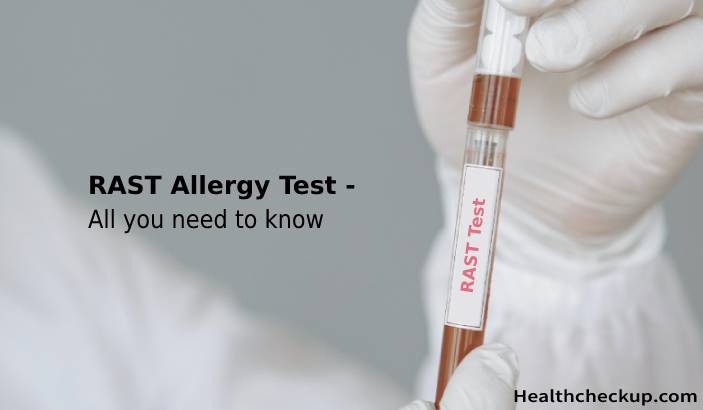According to the Asthma and Allergy Foundation of America, over 50 million people in the United States experience different types of allergies each year. In fact, allergies are the sixth leading cause of chronic illness in the U.S. Allergy tests help healthcare providers determine the cause of allergies and the symptoms that people experience. The most popular are allergy skin tests, but they’re not the only testing methods. In this post, we’re going to discuss the RAST test, yet another way to test for the presence of allergies.
What is the RAST test and how does it work?
The radioallergosorbent test, or RAST test for short, is a blood test that determines what a person is allergic to. The name RAST was initially a brand name associated with the company that developed the methodology. The RAST methodology was invented and marketed in 1974 by the Swedish company Pharmacia Diagnostics AB. Nowadays the term is widely used to refer to any blood test for allergens, although the reality is different.
The main purpose of a RAST allergy test is to see whether a patient’s blood contains antibodies for a specific allergen such as peanut or pollen. These antibodies are called immunoglobulin E (IgE).
The presence of IgE antibodies related to a specific substance indicates a person is allergic to it. These antibodies can cause symptoms that a person experiences when in contact with that allergen. Common symptoms include itchiness, rash, sneezing, and others.
The original RAST methodology is considered out of date now. For that reason, a healthcare provider is more likely to order an ELISA test, which stands for enzyme-linked immunosorbent assay.
RAST test vs. skin test for allergy
Healthcare providers can use both the RAST allergy test and skin test to determine whether a patient is allergic to some substance. Although their purpose is the same, these tests are entirely different.
Skin test i.e. skin prick testing is the most common method of diagnosing allergies. It involves lightly pricking the skin on the back or arm with a comb-like tool, after which a healthcare professional adds a tiny amount of suspected allergen over that area. Swelling or itching and redness at the site indicate the presence of an allergy to that specific substance.
As mentioned above, RAST testing involves drawing blood and evaluating for the presence of certain antibodies.
Besides different methods, these tests also differ in terms of the availability of results. Skin prick testing yields results faster because a doctor or nurse sees changes on the skin immediately 20 to 30 minutes after the exposure. You might need to wait for several days to get the results of a RAST test.
Skin prick testing is more sensitive than the RAST test. For that reason, some people may have a serious reaction to an allergen and get into anaphylactic shock. That’s why RAST testing could be a safer option. Plus, one blood draw can test for multiple allergens whereas skin pricking involves adding tiny amounts of different allergens to find what a person is allergic to.
What allergies can the RAST test detect?
As mentioned above, a single blood draw for a RAST test can be used to detect multiple allergies. These include:
- Seasonal allergies
- Food allergies
- Pet allergies
At the same time, healthcare professionals may recommend a RAST allergy test as a part of the testing and treatment process when monitoring the progress of allergies among young children. The doctors may observe IgE antibodies to track the allergic march i.e. progression of allergy from infancy to childhood.
Testing process and accuracy of results
Like any other blood test, RAST testing doesn’t require specific preparation. It’s a straightforward procedure where a healthcare professional draws a little bit of blood from the patient’s arm.
When it comes to the accuracy of results, it’s important to keep in mind that around 50% to 60% of blood and skin allergy tests yield false positive results for food allergies, according to Food and Allergy Research & Education (FARE).
A RAST test may show a person could be allergic to some substance in general, but more tests could be necessary for specific allergies. For example, a person may be told they’re allergic to chickpeas even when they’re not, just because it’s in the same family as peanuts, which induces an allergic response.
Conclusion
Allergies are common; millions of people have them. They provoke uncomfortable symptoms and in some cases, allergies are so severe they cause anaphylactic shock. For that reason, allergy testing is necessary. The most common testing method is skin pricking, but it’s not the only one. RAST test is a type of blood test that determines whether a person is allergic to something by looking for the presence of certain antibodies. This test is less sensitive than skin testing and could be useful for young children and people who are at risk of severe allergic reactions.
Doctor, author and fitness enthusiast, Ahmed Zayed, MD, is a surgery resident with a passion for helping people live a happy healthy life. He is the author of numerous health-related books and contributor to several medicine, health and wellbeing websites.








